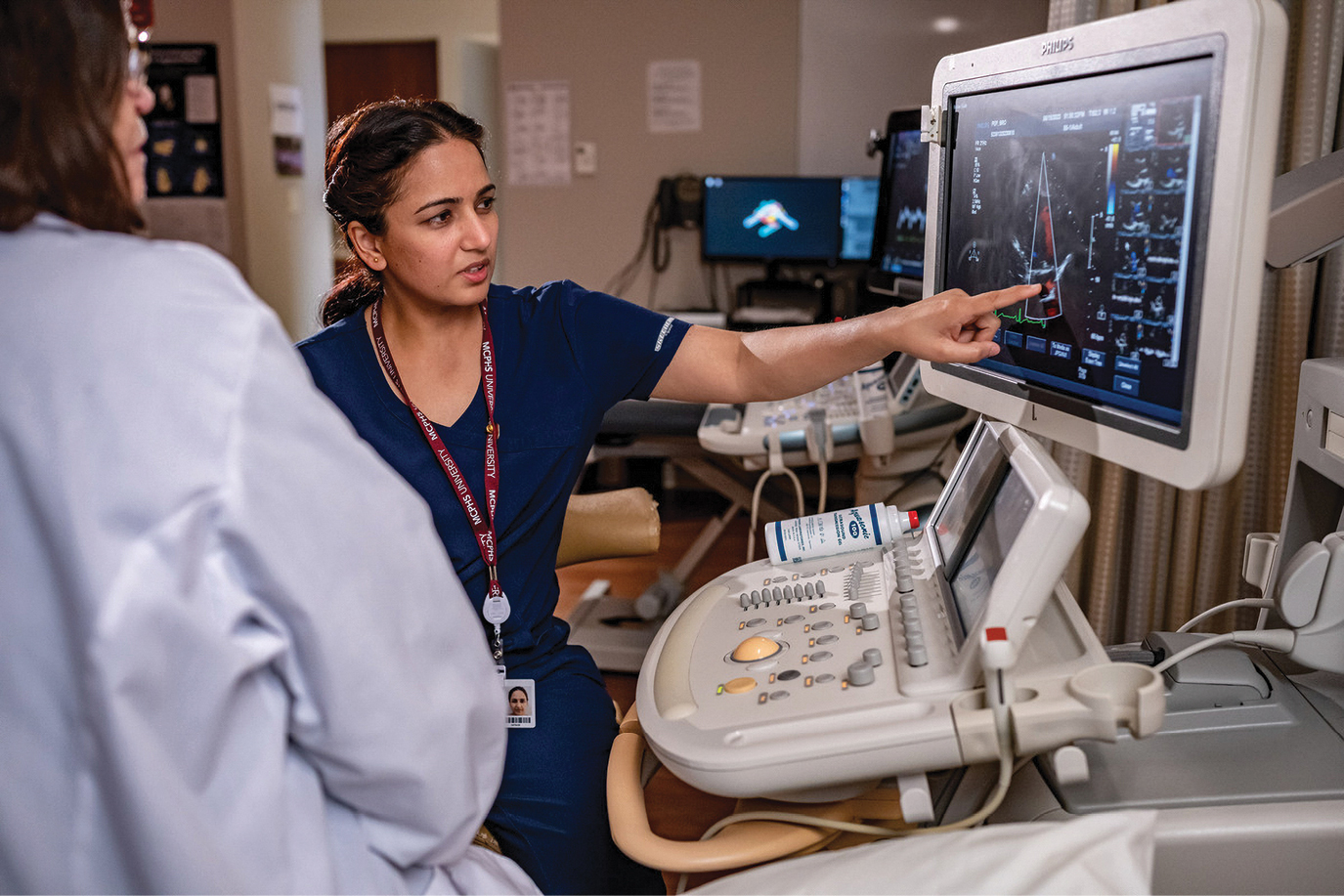Right now, our nation’s leading universities are embarking on research that will change the trajectory of our microelectronics capabilities, on this planet and beyond.
There’s a good chance this R&D is taking place in your community. And if not now, then soon.
At an Electronics Resurgence Initiative Summit held by the Department of Defense’s (DoD) Defense Advanced Research Projects Agency in August 2020, the urgency was palpable. The U.S. needs to get serious about advancing its integrated circuit technologies, strengthen the national STEM workforce, address supply chain threats and rapidly mature, co-develop and transition new and emerging technologies.
As a result of these challenges the Scalable Asymmetric Lifecycle Engagement (SCALE) network was born. Out of dozens of applicants, Purdue University was selected to lead the initiative, which is funded by the DoD’s Trusted and Assured Microelectronics program and managed by the Naval Surface Warfare Center (NSWC) Crane Division.
“If you look at what was done historically, there were a lot of workforce development efforts, but there wasn’t a national network that continued over an extended period of time like this one,” says SCALE Director and Purdue Professor of Electrical and Computer Engineering Peter Bermel. “But obviously, we think that now is the right time to do this because of the rapid increase in hiring needs.”
Today, the program takes place across 22 universities in the nation and 48 industrial and government partners. Undergraduate and graduate students participating in SCALE receive mentorship, internship and research opportunities within the public-private-academic partnership.
These opportunities exist within leading U.S. industrial partners including Blue Origin, Boeing, IBM, Intel and Northrup Grumman Corporation, just to name a few.
Before SCALE, Purdue averaged about 200 students per year through its semiconductor-related degree programs. Now, that number has essentially doubled as the program aims to draw in 1,000 students across its network over the next five years, in addition to bringing on a total of 100 industrial partners and 25 universities.
In August 2023, Purdue announced that the SCALE program would gain $20 million in funding from the DoD to expand key research areas and add new academic partners. Key technology focus areas include radiation-hardening, heterogeneous integration, system-on-chip, embedded systems and artificial intelligence, supply-chain awareness, radio frequency and optical electronics.
Current research efforts are diverse across different universities, according to Bermel. To name a few, Vanderbilt University, Ohio State University and Notre Dame University are among the universities exploring cross-connections between artificial intelligence, software and ideas, while others research how this hardware is affected by extreme environments like outer space.
“As well as advanced memory architectures, how do these perform in space environments? If you think about what’s being done by mainstream commercial producers, they don’t necessarily focus on issues like that because their costumers are on Earth,” says Bermel. “But they also need to know what happens outside of Earth if you’re going to launch a satellite and so on, because that can affect whether it’s correct to use those electronics or if you need to use something different. Being able to understand the potential performance and predicted accuracy is critical.”
Renewed funding opens the door for new institutions to partner with SCALE, and there are “a variety of merit considerations” in selecting the right contender, says Bermel. He states that the first is a university’s ability to contribute to the program in terms of faculty experience, for example. The second is their ability to work with defense and security partners, including government agencies and private contractors. Additionally, consideration encompasses a university’s track record in placing students within those sectors, as well as proximity to growth and employers.

Purdue looks to expand its SCALE program with renewed funding support.
Photo courtesy of Purdue University/ Charles Jischke
Morgan State University, the University of Tulsa and the University of Florida’s Microelectronics Security Training Center were selected to join SCALE’s expanding network. For Bermel, these additions are exciting and will bring together more students interested in gaining in-demand skills and experiences.
The program gives Purdue the ability to expand and strengthen partnerships with new organizations, says Bermel, “particularly working with Morgan State University and the Tougaloo College Research and Development Foundation to reach out to a broader group of students, who are primarily U.S. citizens, and getting them invested in the workforce opportunities going forward.”
The Semiconductor Industry Association predicts that the industry’s workforce will add about 115,000 jobs by 2030, estimating that 67,000 of the projected jobs are at risk of being unfilled. With initiatives like SCALE and the CHIPS Act in place, the U.S. is preparing itself to address workforce development unlike ever before.
More Life to Science
Aside from microelectronics, life sciences is another industry looking to up its ante.
In Boston, Massachusetts, the Massachusetts College of Pharmacy and Health Sciences (MCPHS) is well underway in addressing workforce development in the rapidly growing industry.
September 2023 brought the announcement of $750,000 in grant funding from the Massachusetts Life Sciences Center, a $120,000 jump from the grant received the previous year. MCPHS received the maximum amount of funding offered and will use the grant to bring in new lab equipment, upgrade existing equipment and introduce a digital badge and micro-credentials system that tracks a student’s familiarity or competence with advanced scientific instruments.
In receiving the maximum grant, MCPHS will look to train a larger group of students moving forward.
“The state-of-the-art pieces of equipment we are purchasing are the tools that leading biotechnology, biopharmaceutical and biomanufacturing companies are using,” said MCPHS Department Chair of Pharmaceutical Business & Administrative Sciences Frederick Frankhauser. “Students will have the opportunity to strengthen their training here and solidify their chances of employment once they leave our doors.”
Boston has overtaken California’s lead in biotechnology, becoming the No. 1 biotech hub in the world even as, in terms of employment density, the San Francisco Bay Area still leads over Boston. Over 1,000 biotechnology companies, large and small, are located within the Greater Boston region, providing solid employment opportunities to graduates.
MCPHS also will be a key partner in Bioversity, the new workforce training center being built in Dorchester. By January 2024, construction on the 4,000-sq.-ft. facility will be completed, bringing in new lab and classroom space for students. The program will begin with 18 to 20 students to start, increasing to 100 the following year.
“The state-of-the-art pieces of equipment we are purchasing are the tools that leading biotechnology, biopharmaceutical and biomanufacturing companies are using. Students will have the opportunity to strengthen their training here and solidify their chances of employment once they leave our doors.”
— Frederick Frankhauser, MCPHS Department Chair of Pharmaceutical Business & Administrative Sciences
As an educational partner at Bioversity, MCPHS will develop curriculum in areas such as scientific operations and biomanufacturing for the program’s first cohort of students and design learning modules in line with industry needs. Students participating in Bioversity will receive a $500 stipend every week over the entire eight-week training program and a $2,000 tuition voucher upon graduating.
“This is a remarkable moment in biomedicine, with a wave of innovation poised to forever change the way that healthcare providers prevent and treat disease,” said MCPHS Dean of the School of Professional Studies Carol Stuckey. “And we are standing in the heart of a community that will contribute to and benefit from the wave.”

